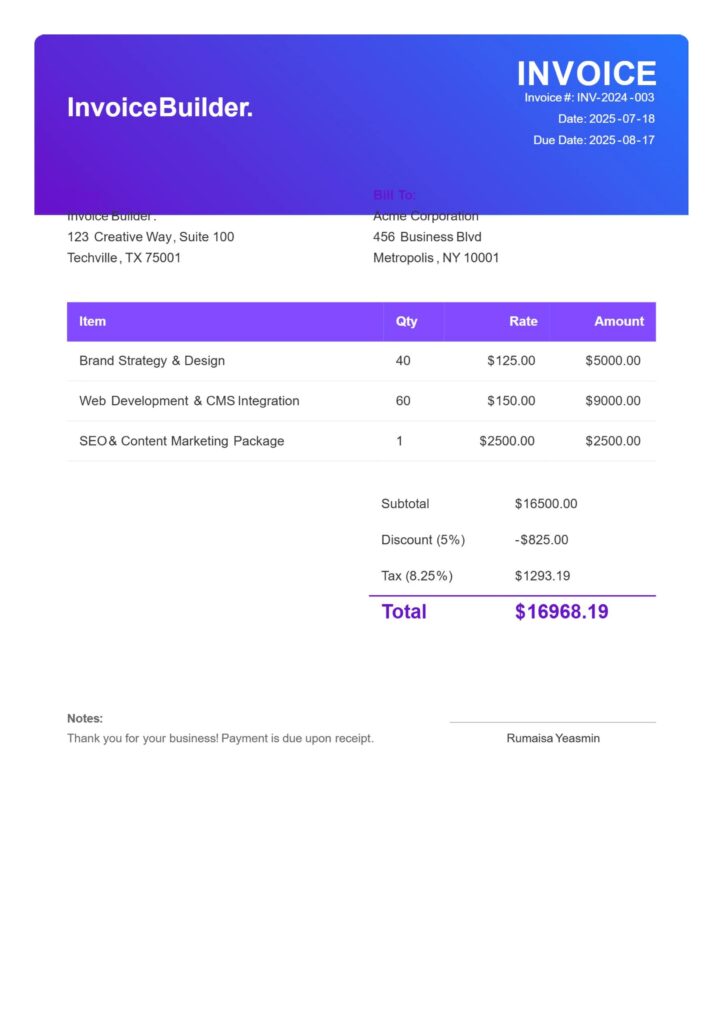Professional Invoice Design

Is an invoice a receipt?
Key Differences
| Feature | Invoice | Receipt |
|---|---|---|
| Purpose | Requests payment (bill for goods/services). | Confirms payment (proof of transaction). |
| When Issued | Before payment (to notify the buyer). | After payment (to acknowledge completion). |
| Legal Role | Establishes debt/obligation to pay. | Proves payment was made. |
| Content | – Payment terms – Due date – Itemized costs | – Payment method – Date paid – Amount received |
Invoice Example
INVOICE #101
Due: Aug 30, 2025
Item: Web Design Service – $1,200
Total Due: $1,200
Payment terms: Net 30 days
Receipt Example
RECEIPT #R205
Paid: Aug 15, 2025
Item: Web Design Service – $1,200
Payment Method: Credit Card (****1234)
Amount Received: $1,200
Why the Confusion?
- Some tools (e.g., Square, QuickBooks) auto-convert paid invoices into receipts, blurring the line.
- Simplified transactions (e.g., retail) may combine both (e.g., “paid invoice” receipts).
Critical Notes
✅ Accounting:
- Invoices = Recorded as accounts receivable (money owed).
- Receipts = Recorded as revenue (money received).
✅ Taxes: - Invoices help track sales tax owed.
- Receipts prove taxes were collected.
⚠️ Legal Risk: - Accepting goods without an invoice → No proof of debt terms.
- Paying without a receipt → No proof of payment.
When Do You Need Invoice/Receipt?
- Send an invoice → When billing a client or customer.
- Issue a receipt → After receiving payment (cash, card, check).
- Exception: For instant payments (e.g., POS systems), the receipt often serves as both.
In short: An invoice is a request for money, while a receipt is proof of money received. Always keep both.